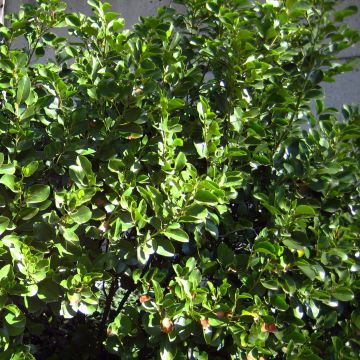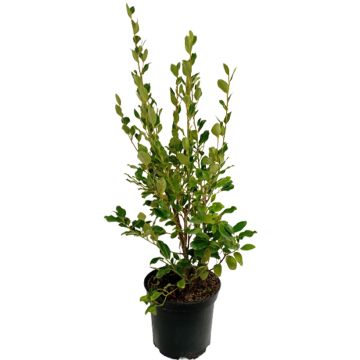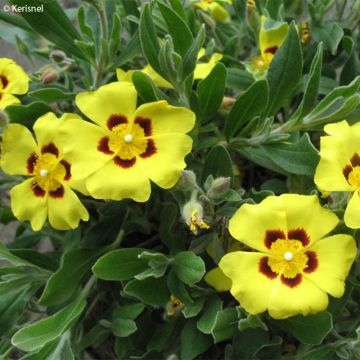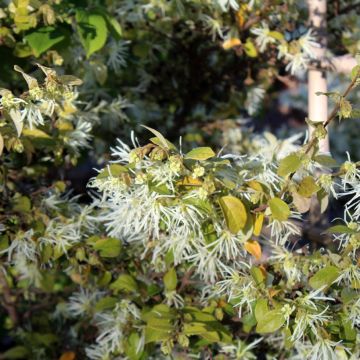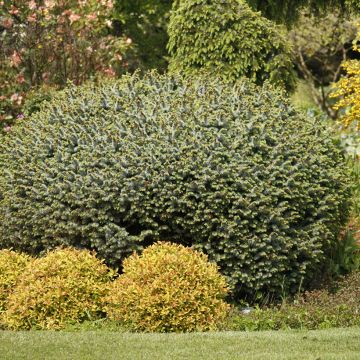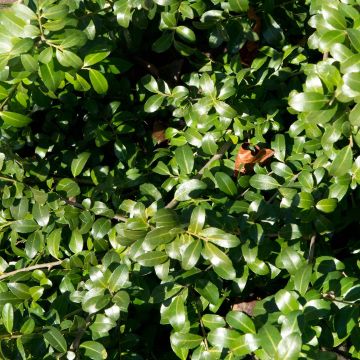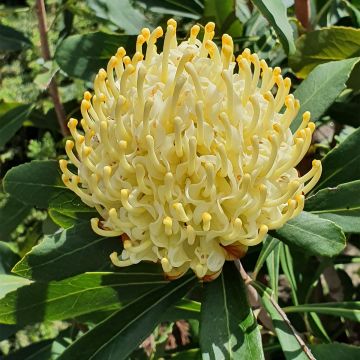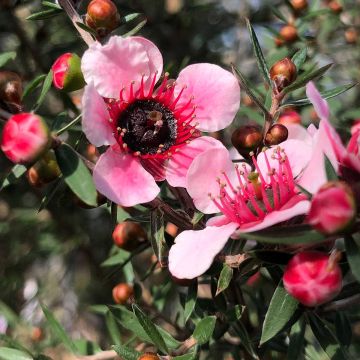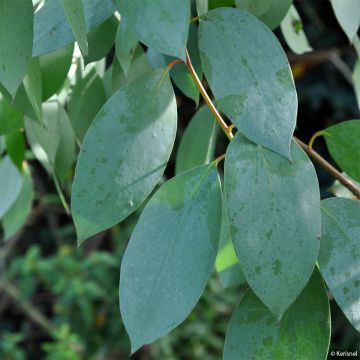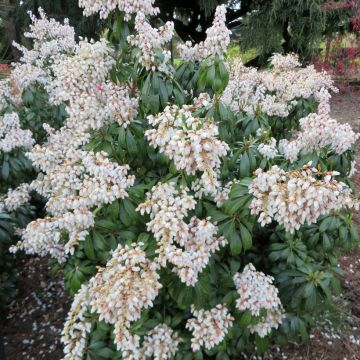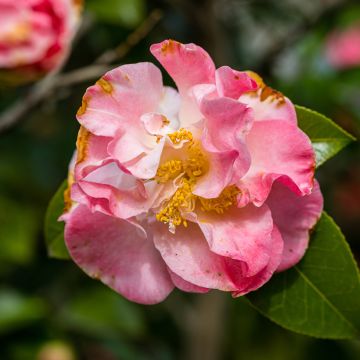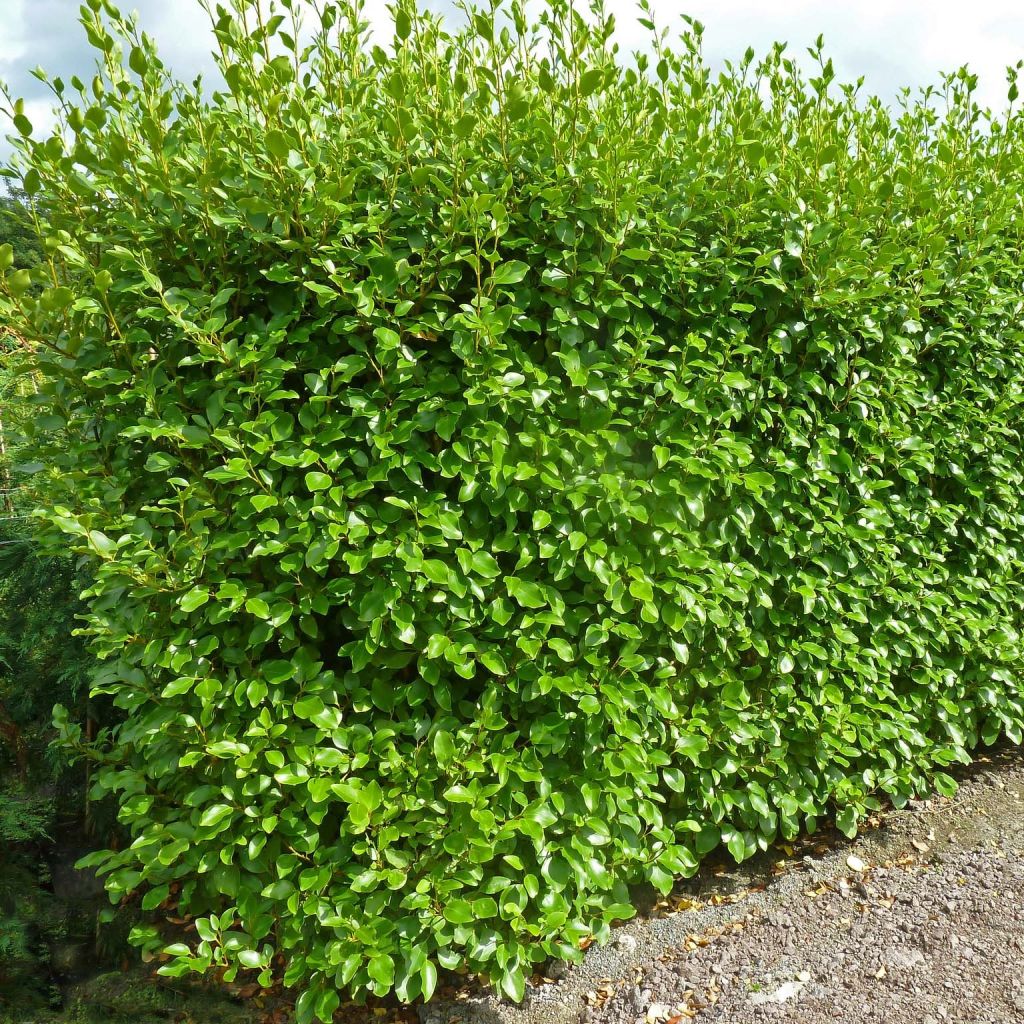

Griselinia littoralis Green Horizon
Griselinia littoralis Green Horizon
Griselinia littoralis Green Horizon 'Whenuapai'
New Zealand Broadleaf, Kapuka, New Zealand Laurel, New Zealand Privet
Plant received on site - it is in very good condition. I chose it based on plantfit, which helped me a lot given my very basic knowledge in the matter. I am confident that its development will go well.
celine, 18/03/2024
Why not try an alternative variety in stock?
View all →This plant carries a 24 months recovery warranty
More information
We guarantee the quality of our plants for a full growing cycle, and will replace at our expense any plant that fails to recover under normal climatic and planting conditions.
From €5.90 for pickup delivery and €6.90 for home delivery
Express home delivery from €8.90.

Does this plant fit my garden?
Set up your Plantfit profile →
Description
Griselinia littoralis Green Horizon is a new selection of Griselinia that is interesting for its more compact habit and improved cold resistance. It also has slightly larger, rounder leaves that are a vibrant, glossy green. With its beautiful, evergreen foliage, this slender bush is elegant and makes an excellent windbreak or privacy hedge, hardy down to -8°C (17.6 °F), suitable for temperate regions and coastal areas. Perfect for coastal regions, its discreet elegance will also make a big impact in a large container on a terrace.
Griselinia littoralis is a bush in the dogwood family, just like the cornus. It is endemic to New Zealand, where it grows in coastal forests up to 900m (2952 ft 10 in) altitude. While it can grow into a true tree with multiple trunks reaching 12m (39 ft 5 in) in height in its natural environment, it will not exceed 3m (9 ft 10 in) in height in our climates, and will remain even smaller when grown in pots.
The 'Green Horizon' cultivar distinguishes itself with its denser growth and increased hardiness (down to -9 or -10°C (15.8 or 14 °F) for an established plant). It has an upright, bushy and dense habit, reaching approximately 3 to 4m (9 ft 10 in to 13 ft 1 in) in height at maturity and 2m (6 ft 7 in) in width if left unpruned. Its growth rate is rapid in slightly acidic, moist and deep soil, averaging 30cm (11.8 in) per year. In a highly alkaline soil, its growth will be significantly reduced. Its fleible trunk and branches are covered in a smooth, yellow-green bark when young, becoming greyish-ochre and fissured over time. The foliage, which can be more or less evergreen depending on the severity of the winter, is composed of erect, rounded to oval, incurved leaves measuring 5 to 12cm (2 to 4.7 in) in length. The texture of the young leaves is fine and flexible, then becomes thick, almost succulent, leathery and very glossy at maturity. Their colour is a deep, shiny emerald green. The May-June flowering, is more abundant in the sun, but still not very noticeable: it takes the form of small axillary panicles composed of about a hundred small, petal-less green-yellow flowers. While it may often go unnoticed by our eyes, it attracts a large number of pollinating insects that gather a bountiful harvest of pollen from it. As this bush is dioecious, only the female plants will bear fruit, provided a male plant is planted nearby. These clusters of fruit are composed of small ovoid, acid-green berries which turn black when ripe and contain only one seed.
Well-suited for coastal areas, the Griselinia littoralis Green Horizon is often used to create hedges along garden boundaries, reaching a height of 2 to 3 metres (6 feet 7 inches to 9 feet 10 inches), to protect from wind and prying eyes. It also adapts well to container cultivation, placed on a terrace or balcony. This cultivation method allows gardeners in colder regions to protect it from severe cold in an unheated greenhouse or conservatory during winter. Its height will be less significant in pots, but the plant will quickly fill the available space by spreading out. In the ground, it can also be used in a grove, alone or combined with other evergreen shrubs such as purple laurel, Photinia Pink Marble, Elaeagnus, evergreen Ceanothus or Pittosporum. It will also be very useful for creating a dense screen along a terrace, facing prevailing winds.
Report an error about the product description
Griselinia littoralis Green Horizon in pictures
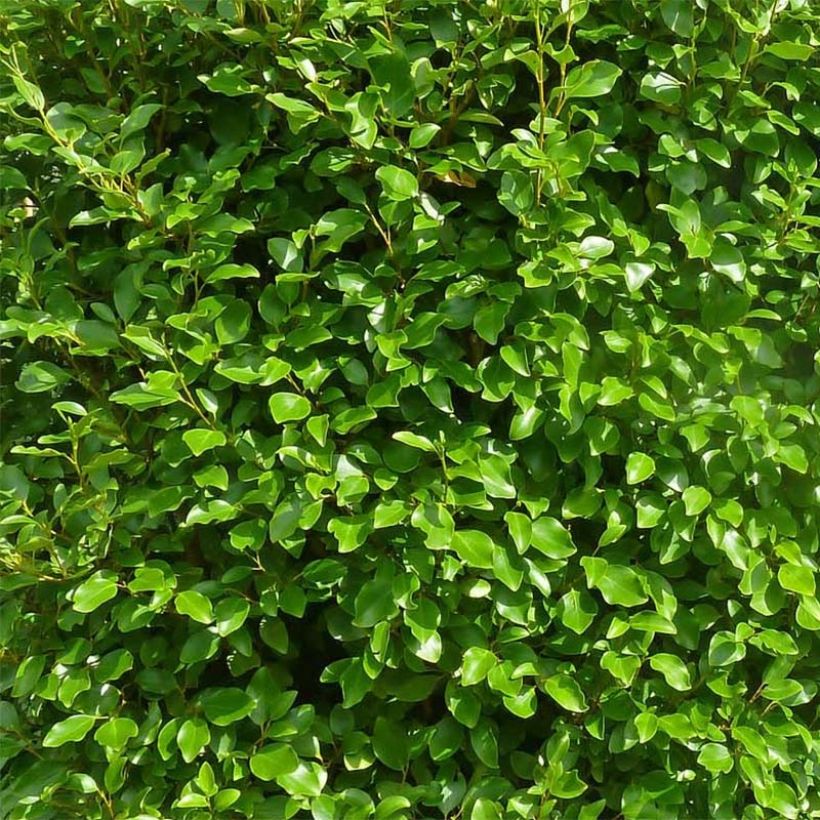

Plant habit
Flowering
Foliage
Botanical data
Griselinia
littoralis
Green Horizon 'Whenuapai'
Griseliniaceae (Cornaceae)
New Zealand Broadleaf, Kapuka, New Zealand Laurel, New Zealand Privet
Oceania
Other Griselinia
Planting and care
Griselinia littoralis Green Horizon is best planted in spring after the last frost in cool climates, or in September-October in climates with warmer and drier summers. Its hardiness does not exceed -7/-10 °C in well-drained soil and sheltered from dry and cold winds. Its foliage becomes deciduous in very cold winters or during prolonged periods of frost. Therefore, it is not recommended to use it on coasts located very far north or in regions with harsh and humid winters. It adapts to any ordinary soil that is properly loosened, light, and well-drained, but prefers a light, sandy, humus-rich, deep, slightly acidic (without limestone), and slightly moist soil to support its growth. This bush dislikes heavy and/or waterlogged soils in winter. It proves to be quite resistant to summer drought once well established. A sunny exposure, but not scorching, or partially shaded in hot climates, is preferred. This bush will be more floriferous in the sun.
It tolerates light pruning 1 to 2 times a year, after flowering in early or late summer. Shorten the branches that hinder the harmony of the appearance. The cuts must be clean and made with a well-sharpened and clean tool.
Planting period
Intended location
Care
-
, onOrder confirmed
Reply from on Promesse de fleurs
Evergreen shrubs
Haven't found what you were looking for?
Hardiness is the lowest winter temperature a plant can endure without suffering serious damage or even dying. However, hardiness is affected by location (a sheltered area, such as a patio), protection (winter cover) and soil type (hardiness is improved by well-drained soil).

Photo Sharing Terms & Conditions
In order to encourage gardeners to interact and share their experiences, Promesse de fleurs offers various media enabling content to be uploaded onto its Site - in particular via the ‘Photo sharing’ module.
The User agrees to refrain from:
- Posting any content that is illegal, prejudicial, insulting, racist, inciteful to hatred, revisionist, contrary to public decency, that infringes on privacy or on the privacy rights of third parties, in particular the publicity rights of persons and goods, intellectual property rights, or the right to privacy.
- Submitting content on behalf of a third party;
- Impersonate the identity of a third party and/or publish any personal information about a third party;
In general, the User undertakes to refrain from any unethical behaviour.
All Content (in particular text, comments, files, images, photos, videos, creative works, etc.), which may be subject to property or intellectual property rights, image or other private rights, shall remain the property of the User, subject to the limited rights granted by the terms of the licence granted by Promesse de fleurs as stated below. Users are at liberty to publish or not to publish such Content on the Site, notably via the ‘Photo Sharing’ facility, and accept that this Content shall be made public and freely accessible, notably on the Internet.
Users further acknowledge, undertake to have ,and guarantee that they hold all necessary rights and permissions to publish such material on the Site, in particular with regard to the legislation in force pertaining to any privacy, property, intellectual property, image, or contractual rights, or rights of any other nature. By publishing such Content on the Site, Users acknowledge accepting full liability as publishers of the Content within the meaning of the law, and grant Promesse de fleurs, free of charge, an inclusive, worldwide licence for the said Content for the entire duration of its publication, including all reproduction, representation, up/downloading, displaying, performing, transmission, and storage rights.
Users also grant permission for their name to be linked to the Content and accept that this link may not always be made available.
By engaging in posting material, Users consent to their Content becoming automatically accessible on the Internet, in particular on other sites and/or blogs and/or web pages of the Promesse de fleurs site, including in particular social pages and the Promesse de fleurs catalogue.
Users may secure the removal of entrusted content free of charge by issuing a simple request via our contact form.
The flowering period indicated on our website applies to countries and regions located in USDA zone 8 (France, the United Kingdom, Ireland, the Netherlands, etc.)
It will vary according to where you live:
- In zones 9 to 10 (Italy, Spain, Greece, etc.), flowering will occur about 2 to 4 weeks earlier.
- In zones 6 to 7 (Germany, Poland, Slovenia, and lower mountainous regions), flowering will be delayed by 2 to 3 weeks.
- In zone 5 (Central Europe, Scandinavia), blooming will be delayed by 3 to 5 weeks.
In temperate climates, pruning of spring-flowering shrubs (forsythia, spireas, etc.) should be done just after flowering.
Pruning of summer-flowering shrubs (Indian Lilac, Perovskia, etc.) can be done in winter or spring.
In cold regions as well as with frost-sensitive plants, avoid pruning too early when severe frosts may still occur.
The planting period indicated on our website applies to countries and regions located in USDA zone 8 (France, United Kingdom, Ireland, Netherlands).
It will vary according to where you live:
- In Mediterranean zones (Marseille, Madrid, Milan, etc.), autumn and winter are the best planting periods.
- In continental zones (Strasbourg, Munich, Vienna, etc.), delay planting by 2 to 3 weeks in spring and bring it forward by 2 to 4 weeks in autumn.
- In mountainous regions (the Alps, Pyrenees, Carpathians, etc.), it is best to plant in late spring (May-June) or late summer (August-September).
The harvesting period indicated on our website applies to countries and regions in USDA zone 8 (France, England, Ireland, the Netherlands).
In colder areas (Scandinavia, Poland, Austria...) fruit and vegetable harvests are likely to be delayed by 3-4 weeks.
In warmer areas (Italy, Spain, Greece, etc.), harvesting will probably take place earlier, depending on weather conditions.
The sowing periods indicated on our website apply to countries and regions within USDA Zone 8 (France, UK, Ireland, Netherlands).
In colder areas (Scandinavia, Poland, Austria...), delay any outdoor sowing by 3-4 weeks, or sow under glass.
In warmer climes (Italy, Spain, Greece, etc.), bring outdoor sowing forward by a few weeks.

































